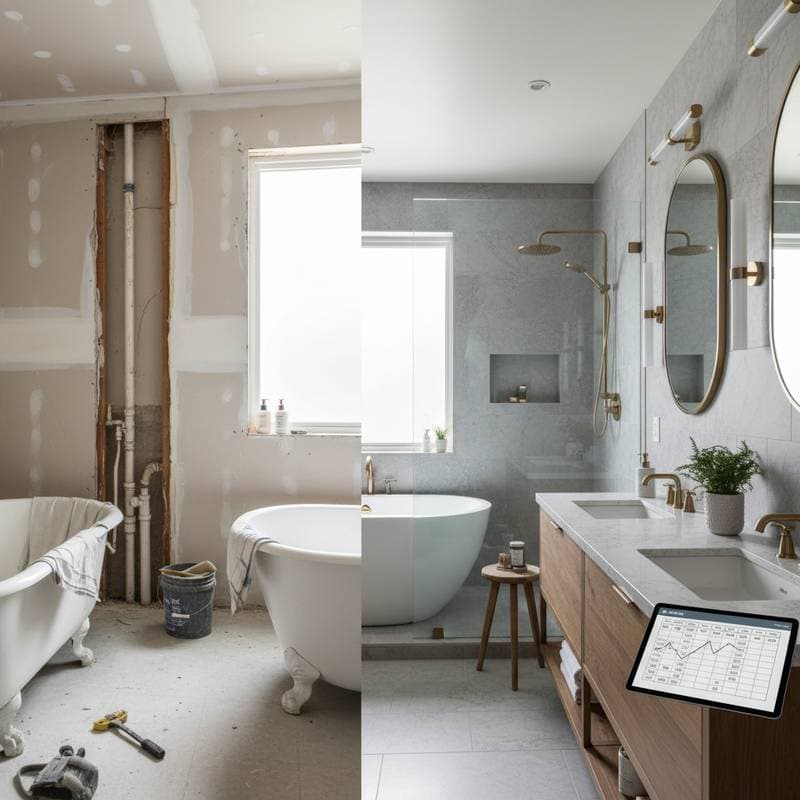Understanding Permeable Driveway Costs and Benefits in 2025
Homeowners increasingly adopt permeable driveways to address stormwater management, curb runoff, and foster cleaner outdoor spaces. These surfaces permit water to infiltrate the ground, easing the load on municipal drainage infrastructure and mitigating erosion or standing water. With urban areas promoting sustainable materials, permeable driveways emerge as a strategic investment. Knowledge of materials, installation procedures, and ongoing savings clarifies whether this option aligns with specific property needs and financial plans.
Defining Permeable Driveways
Permeable driveways incorporate materials that enable rainwater to penetrate the surface rather than sheet across it. Popular choices encompass permeable pavers, porous asphalt, and pervious concrete. A sub-base of crushed stone or gravel serves as a storage layer, capturing water and facilitating gradual filtration into the underlying soil.
This configuration diminishes reliance on elaborate piping systems and aids groundwater replenishment. It further blocks pollutants such as motor oil and road salts from entering stormwater conduits. Post-rainfall, the surface remains drier, enhancing safety for pedestrians and vehicles—a feature valued by many property owners.
Detailed Cost Analysis
Permeable driveway expenses fluctuate based on material selection, site specifics, and geographic factors, typically spanning $10 to $25 per square foot for materials and labor combined. For a standard two-car driveway covering approximately 600 square feet, total costs range from $6,000 to $15,000, influenced by the chosen system and local labor charges.
Key cost influencers include:
- Permeable pavers: $12 to $25 per square foot, delivering aesthetic versatility and superior filtration.
- Pervious concrete: $10 to $18 per square foot, providing a seamless, porous finish suited to contemporary designs.
- Porous asphalt: $8 to $15 per square foot, mimicking conventional asphalt while improving drainage.
- Stabilized gravel systems: $5 to $12 per square foot, the most budget-friendly for low-traffic or rural settings.
These estimates cover excavation, base assembly, and removal of existing surfaces. Sites demanding extensive grading or drainage modifications may incur an additional 10 to 20 percent in fees.
Permeable Versus Traditional Driveways
Standard concrete or asphalt driveways often cost $5 to $12 per square foot initially. However, these impermeable options channel water away, potentially causing cracks, accumulation, or erosion that necessitate future interventions like repairs or enhanced drainage.
Permeable alternatives endure longer with appropriate care, while also moderating thermal effects on adjacent areas to maintain cooler properties during warmer months. Cumulative reductions in stormwater fees, repair expenses, and upkeep frequently recoup the upfront premium over time.
Step-by-Step Installation Guide
Permeable driveway projects proceed methodically, demanding precision for optimal function. The sequence typically involves:
- Excavation: Clearing existing pavement or soil to 12 to 18 inches deep, tailored to the base requirements.
- Base layering: Positioning angular crushed stone in tiers to ensure drainage and structural integrity.
- Geotextile placement: Installing fabric to isolate soil from aggregate and avert sediment intrusion.
- Surface application: Positioning pavers, concrete, or asphalt with precise alignment to preserve permeability.
- Joint completion: Inserting fine gravel or sand to secure components.
Most medium-scale installations conclude in three to five days, though intricate designs extend timelines. Engage certified professionals, as inadequate compaction or sloping risks water retention or structural compromise.
Upkeep and Durability Expectations
Properly constructed permeable driveways endure 25 to 40 years, contingent on material and regional conditions. Maintenance focuses on averting blockages that impair infiltration. Sweep or rinse with low pressure two to four times annually to sustain efficacy. In leafy environments, periodic vacuuming or debris clearance prevents pore obstruction.
Refrain from sealants or coatings, which seal pathways for water. For winter de-icing, opt for non-clumping sand or calcium magnesium acetate over traditional salts to safeguard the surface and subsoil. Diligent routines preserve filtration capacity across years.
Ecological and Economic Advantages
Permeable driveways yield environmental and fiscal gains. Numerous local governments extend stormwater fee reductions or tax rebates for runoff mitigation. Annual savings of 5 to 15 percent on utility bills appear in qualifying districts.
Notable environmental impacts encompass:
- Flood mitigation: Infiltration alleviates sewer overload.
- Enhanced water purity: Soil strata naturally trap contaminants.
- Reduced urban heat: Surfaces absorb and retain less solar energy.
- Ecosystem support: Consistent moisture benefits surrounding flora.
These attributes position permeable driveways as viable tools for eco-friendly property management and value preservation.
Selecting Optimal Materials
Material choice hinges on local weather, soil composition, and usage intensity.
- Pavers: Versatile in patterns and hues, effective in temperate zones emphasizing visual appeal.
- Pervious concrete: Suited to firm soils and average precipitation, yielding a sleek urban aesthetic.
- Porous asphalt: Resilient in freeze-prone areas, resisting thermal expansion cracks.
- Gravel grids: Economical for expansive or countryside driveways prioritizing flow and affordability.
Professional consultations refine selections to harmonize expense, functionality, and style.
Addressing Potential Issues
Neglect or errors can prompt challenges like sedimentation, subsidence, or drainage flaws in permeable setups.
Sedimentation: Debris or fines infiltrate voids; resolve via blower sweeping or professional vacuuming. Steer clear of dense sands or mulches at borders.
Subsidence: Uneven compaction creates dips; remedy by adding base material to level.
Pooling: Signals grading errors or base clogs; adjust slopes or cleanse layers as needed.
Vigilant monitoring averts escalation to expensive fixes.
Strategies for Expense Reduction
Smart tactics and phased approaches minimize outlays.
- Zoned replacements: Upgrade high-wear or prominent areas selectively.
- Self-managed prep: Experienced individuals handle excavation to cut labor by 15 to 25 percent.
- Regional sourcing: Local aggregates lower transport fees and bolster economies.
- Community projects: Bulk installations in neighborhoods secure contractor discounts.
Rebate programs in vulnerable or eco-designated zones further offset costs.
Insights from Practical Applications
Home improvement communities note that permeable paver users encounter fewer post-storm upkeep demands than with solid concrete. Instructional videos illustrate up to 90 percent runoff elimination relative to equivalent asphalt expanses.
Market analyses indicate sustainable features like permeable surfaces accelerate sales by 3 to 7 percent in dynamic real estate sectors. Such evidence underscores the fiscal merits of green infrastructure.
Securing Enduring Value
Permeable driveways fortify properties against erosion, shield foundations from saturation, and complement water-wise gardens. Integrating with native plants or retention features builds resilient landscapes needing minimal watering.
Natural stormwater handling elevates marketability, attracting buyers attuned to sustainability. This upgrade embodies proactive stewardship for environmental and economic health.
Sustaining Peak Performance
Post-installation, routine vigilance ensures longevity. Conduct seasonal sweeps, inspect for shifts, and remove foliage swiftly. Replenish joints periodically and verify uniform infiltration following rains.
For sluggish absorption, summon experts to probe the sub-base and extract residues. Annual investments under a few hundred dollars uphold both utility and curb appeal.
Permeable driveways merge innovative design with proven durability and efficiency. Property owners pursuing resilient, visually pleasing, and green solutions find them indispensable for future-proofing homes.





